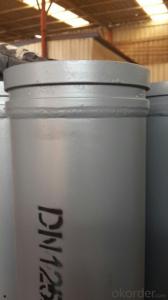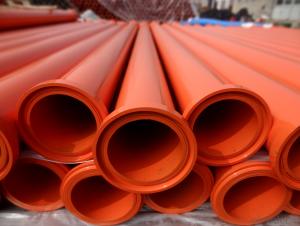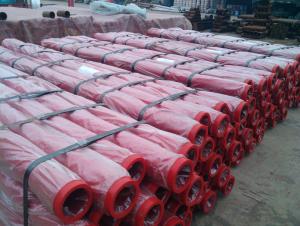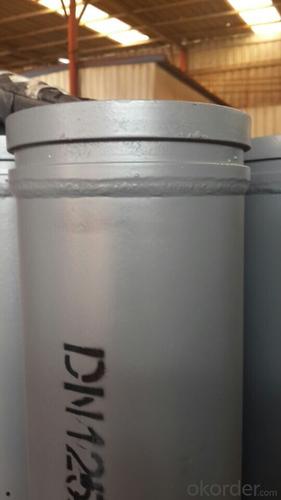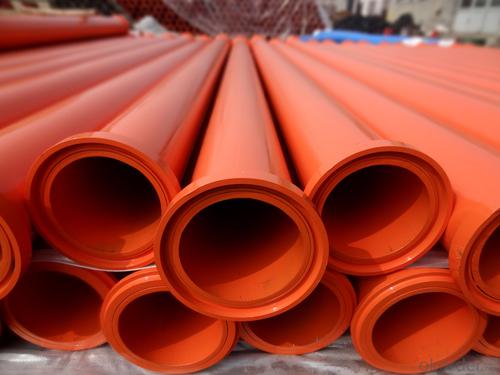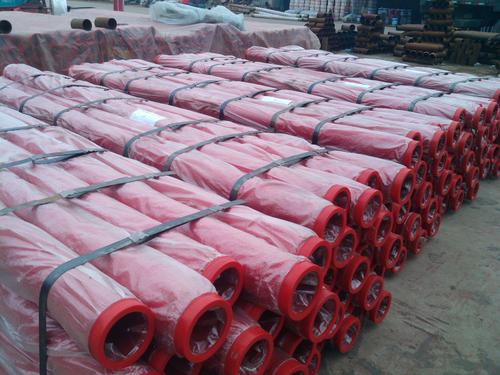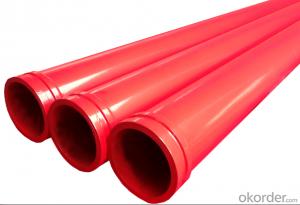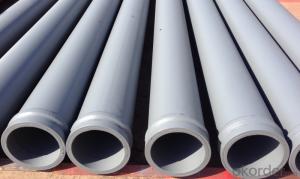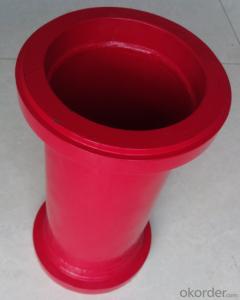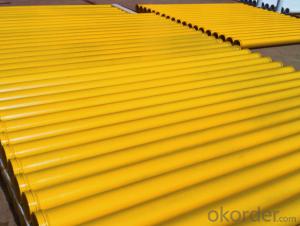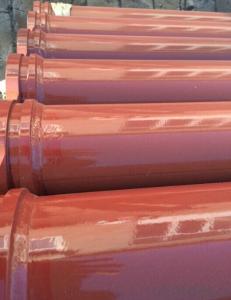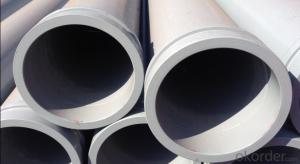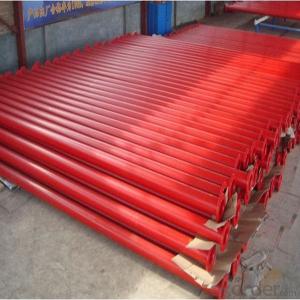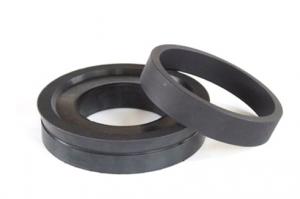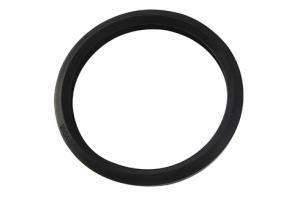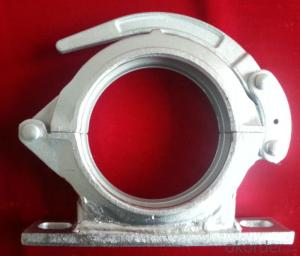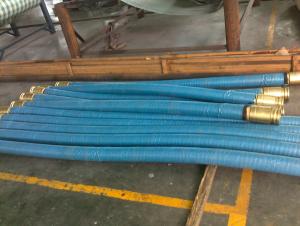Concrete Pump Truck Parts Delivery Pipe Normal Pipe DN125 2MTR Thick 4.1MM ST52
- Loading Port:
- China main port
- Payment Terms:
- TT OR LC
- Min Order Qty:
- 100 pc
- Supply Capability:
- 10000 pc/month
OKorder Service Pledge
OKorder Financial Service
You Might Also Like
Product Description:
Widely used on concrete pump truck, concrete placing boom, trailer concrete pump etc, for concrete delivery pipe connection.
Our concrete pump pipes have been successfully exported to many countries from 1998, Our main markets as below: Middle East, Southeast Asia, America, Brazil, Italy, Russia, South Africa etc.
Main Product Features:
High Chromium and manganese content, which enables a higher wear resisting ability and longer lifetime. s:
Service life:7000-80000 CBM Concrete.
Possess quality certification of ISO 9001:2000. Can pass CE test.
A wide range of specifications for you.
We can supply OEM service and can also produce according to your requirements.
Total series of concrete pump pipes for different brand concrete pump(PUTZMEISTER, SCHWING, CIFA, SANY, ZOOMLION, IHI, KYOKUTO Etc) available from us.
Product Specifications:
Dimension: DN125
Length: 2m
Thickness: 4.1mm
Material: ST52
Characteristics: double-ends flange
Package: Seaworthy packing or as customers’ request.
FAQ:
Q1: How to confirm that your pipes could be used in our pump?
A1: We have been providing parts for nearly ten years, and cooperating with the agent of the world famous brand, possess near every kind of pipe in the market. What is more, we can produce as the customers’ request with drawing provided.
Q2: How do we guarantee the quality of our products?
A2: We have established an advanced quality management system which conducts strict quality tests at every step, from raw materials to the final product.
Q3: How soon can we receive the product after purchase?
A3: Within three days of placing an order, we will begin production. The specific shipping date is dependent upon international and government factors, but is typically 5-15 workdays.
Q4: If we can produce some Concrete Pump Truck Parts according to customers request?
A4: Yes, we can produce Concrete Pump Truck Parts according to the difference country situations to make it suitable to the market and customers. We have very professional technical team to make the design.
Q5: How to make a quick resolution for after service?
A5: OKorder and our manufacture both have overseas branches all-around of world, IF needed, the seller shall dispatch 2 engineers to the buyer's site for supervision of training. The buyer shall make available of necessary facilities & skilled personnel at site for training.
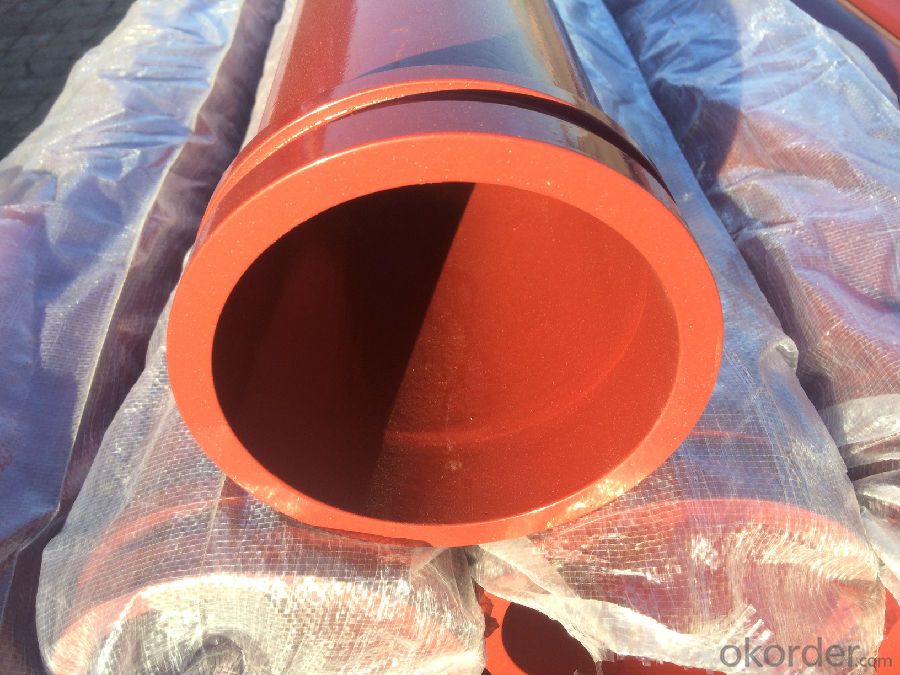
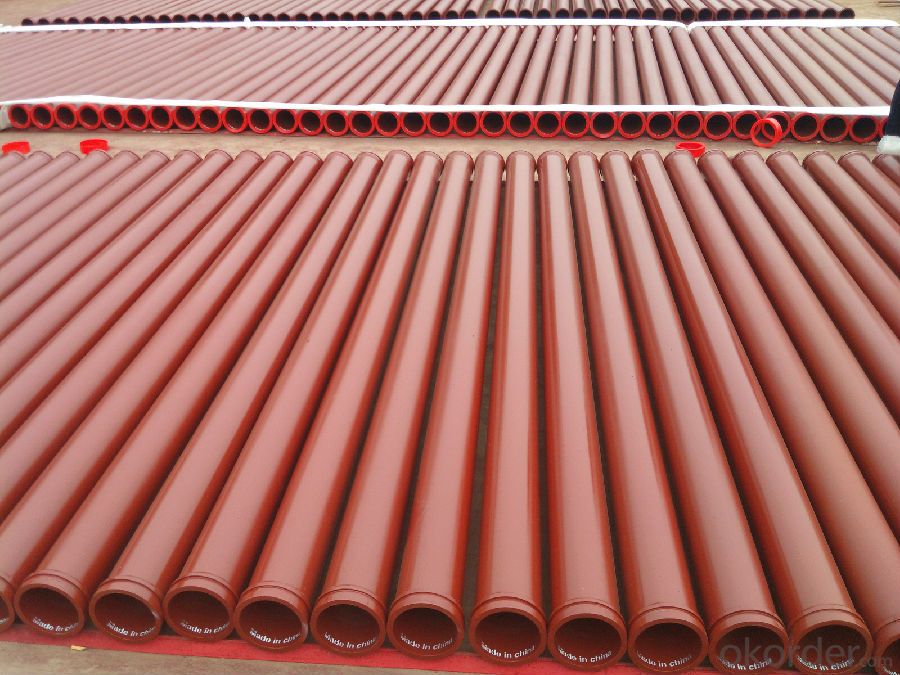
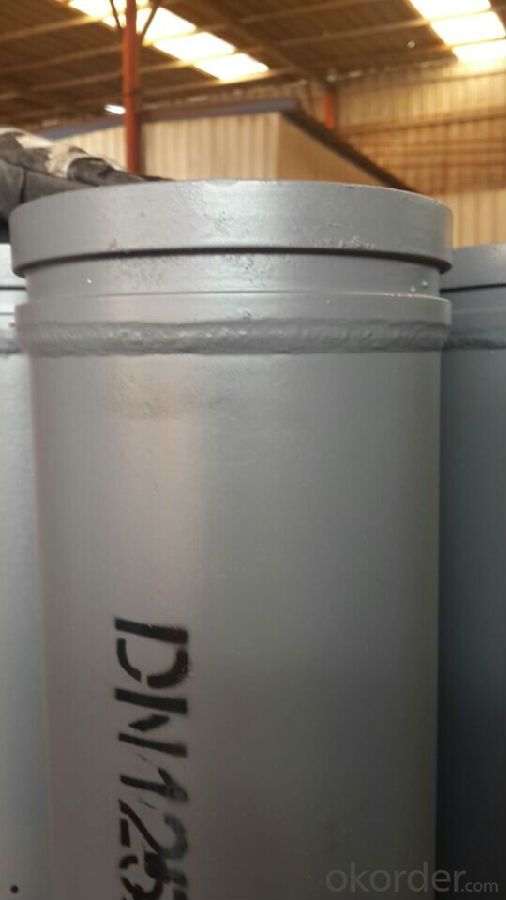
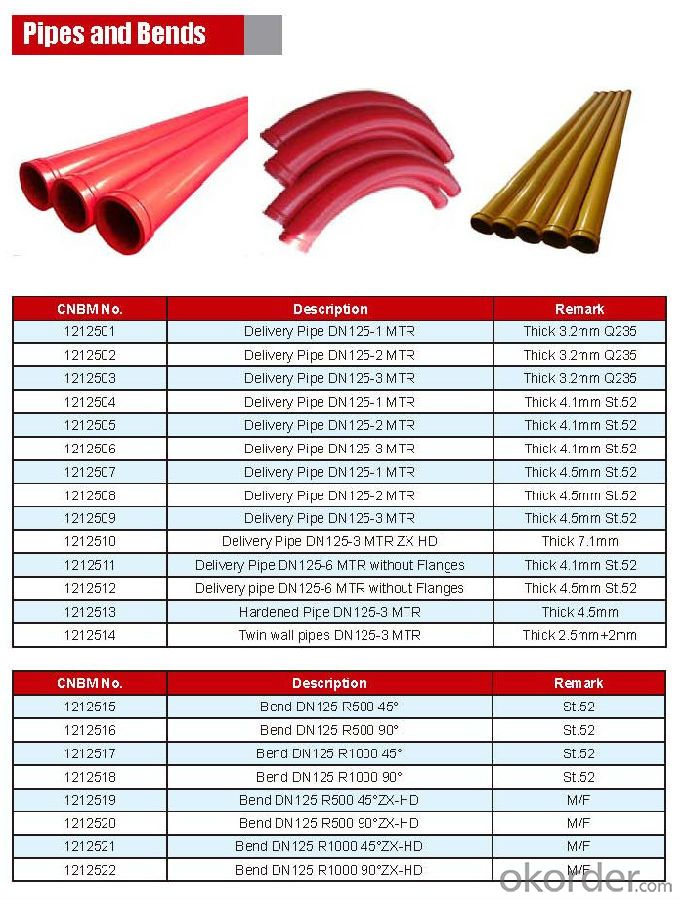
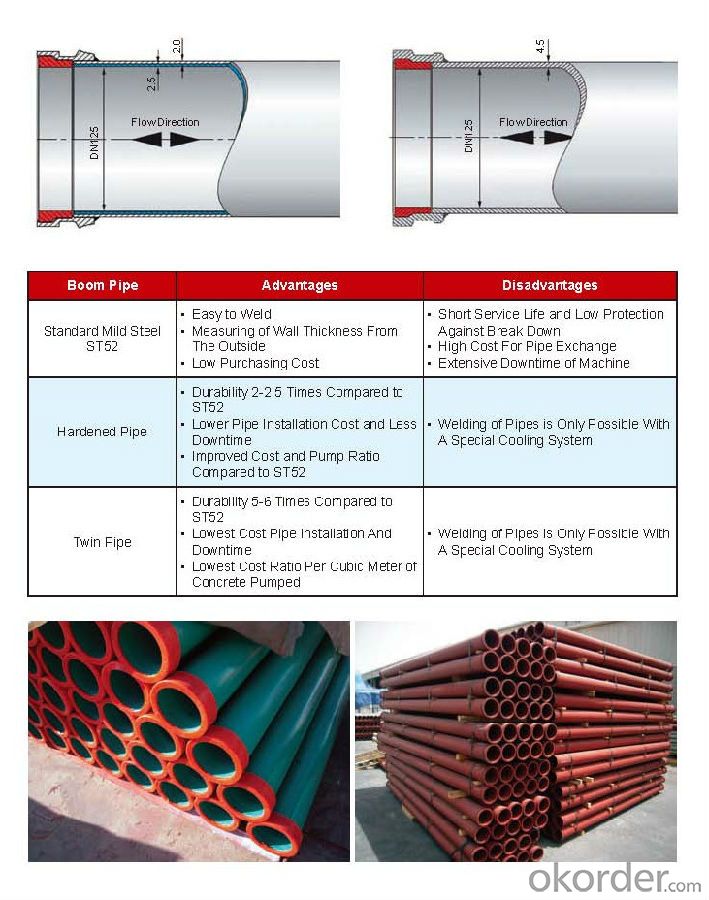
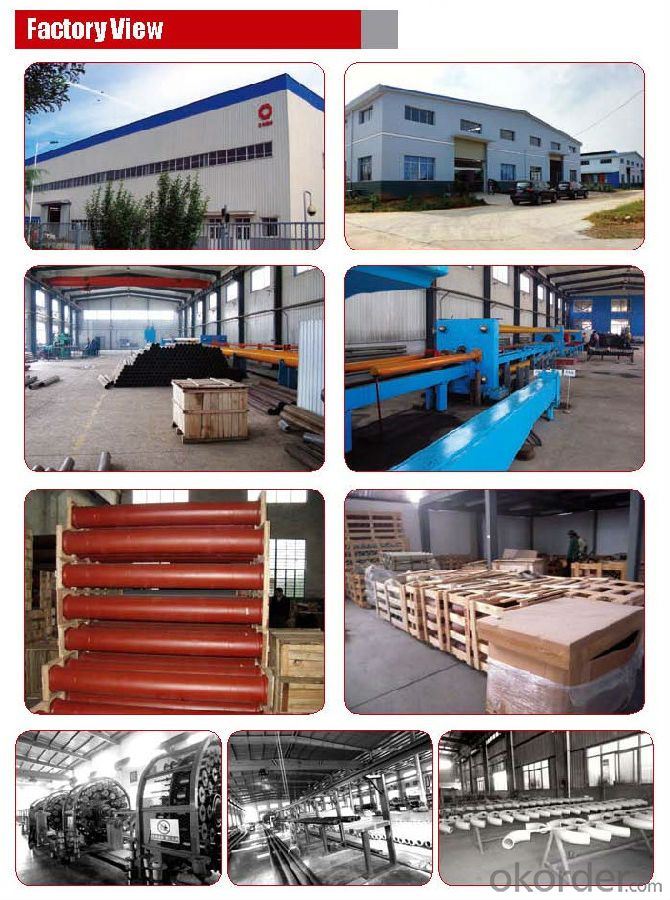
Other Products :
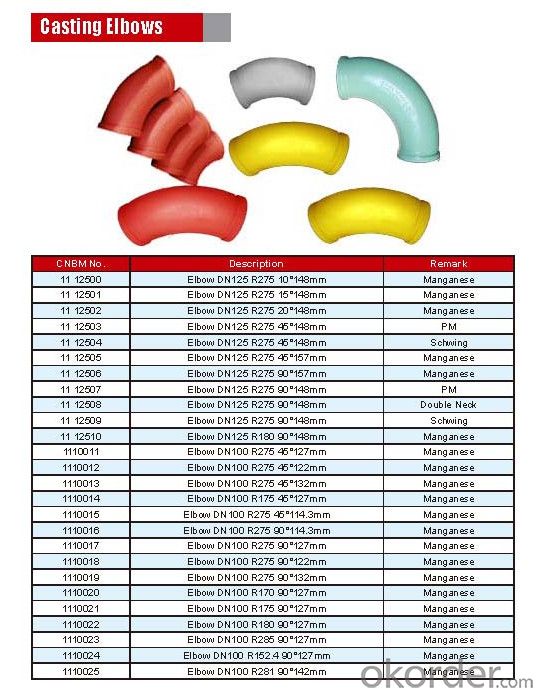
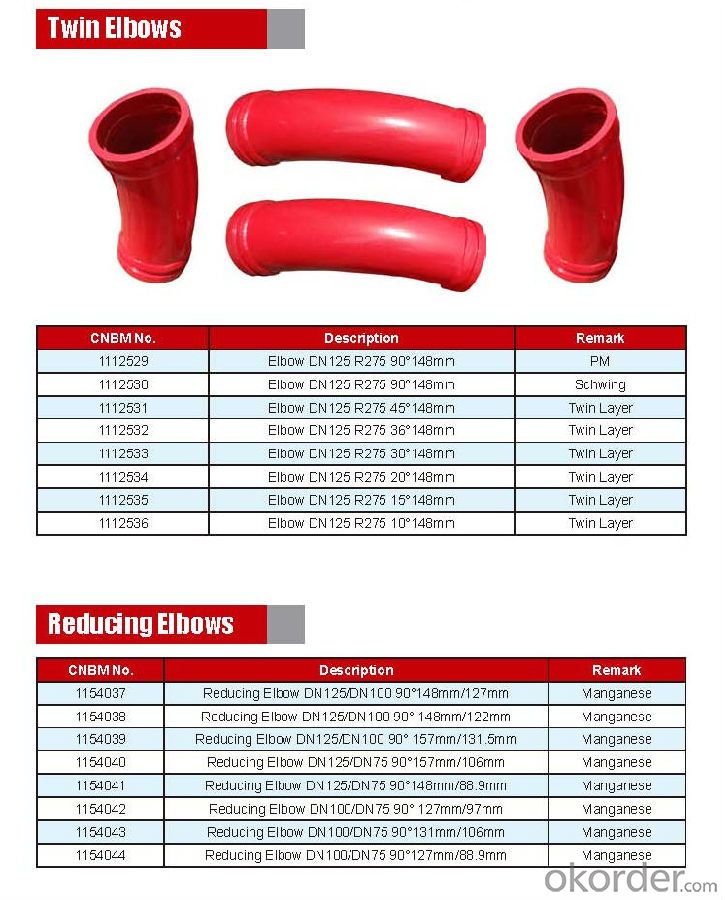
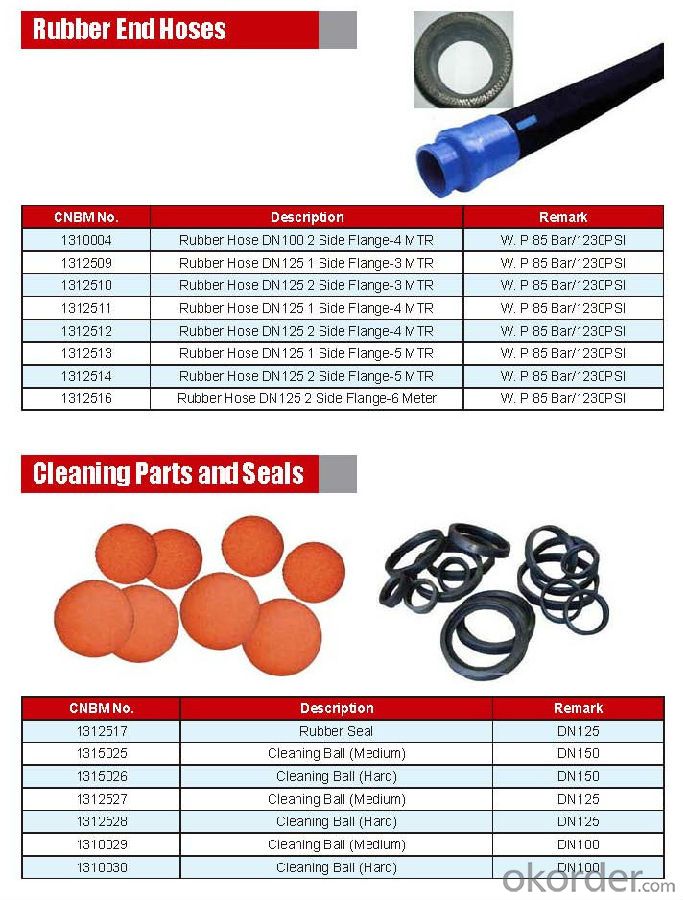
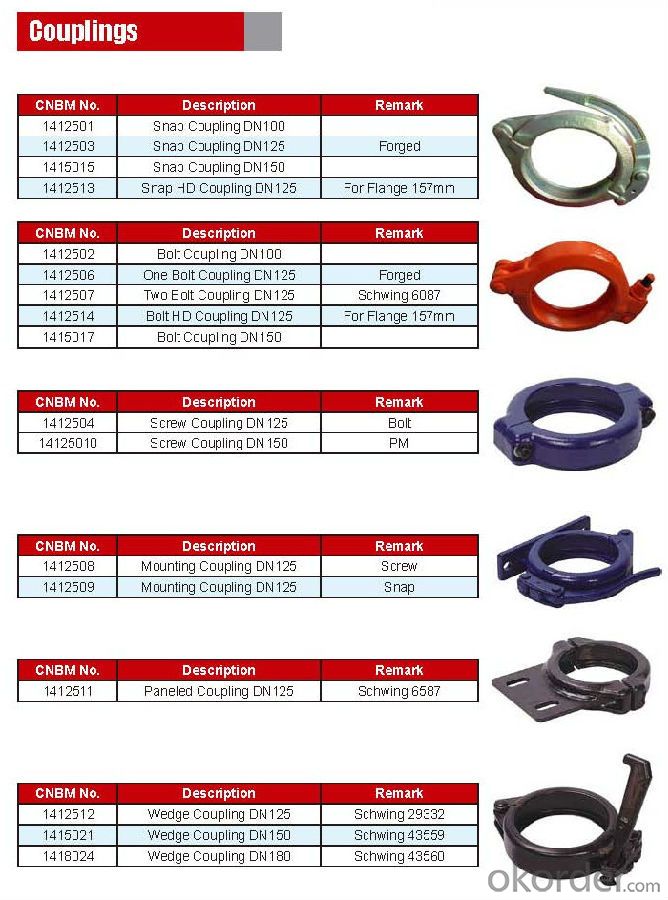
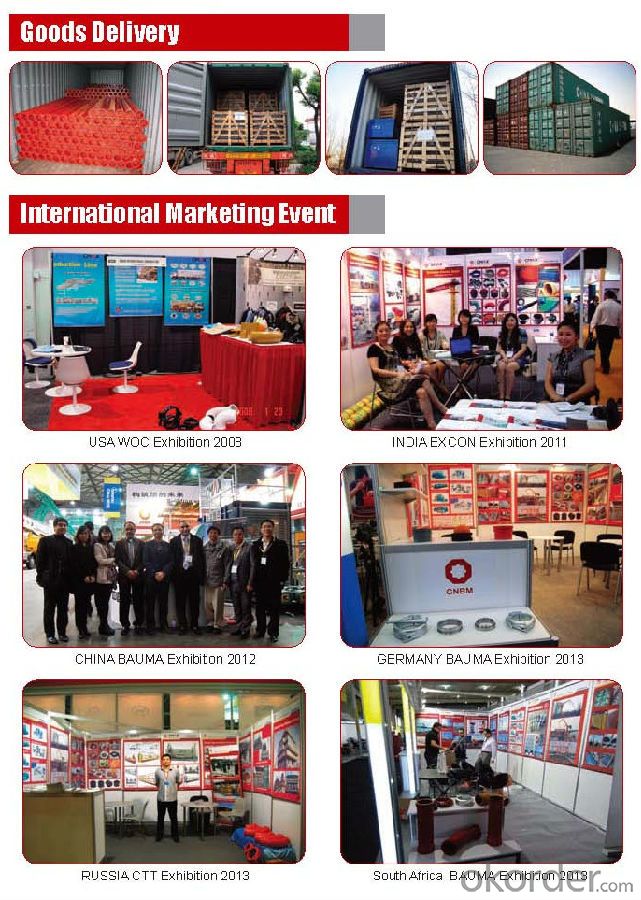
- Q: What are the signs of a damaged concrete pump S valve?
- Some signs of a damaged concrete pump S valve may include leaks, reduced pumping efficiency, irregular or interrupted flow of concrete, excessive wear on the valve components, and difficulty in controlling the concrete output.
- Q: Are there any specific guidelines for the installation of pistons or cylinders in concrete pump spare parts?
- Yes, there are specific guidelines for the installation of pistons or cylinders in concrete pump spare parts. These guidelines are important to ensure proper functioning and longevity of the equipment. 1. Clean and inspect: Before installing pistons or cylinders, it is crucial to thoroughly clean and inspect them for any damage or defects. Any debris or contaminants should be removed to prevent potential issues during operation. 2. Lubrication: Apply a suitable lubricant to the piston or cylinder to reduce friction and ensure smooth movement. This will also help in preventing wear and tear, enhancing the lifespan of the parts. 3. Alignment: Proper alignment of the piston or cylinder is essential. Ensure that the piston is aligned correctly with the cylinder bore to avoid any binding or excessive wear. This can be achieved by following the manufacturer's instructions or consulting a professional if necessary. 4. Torque specifications: It is important to tighten the bolts or fasteners according to the manufacturer's recommended torque specifications. Over-tightening or under-tightening can lead to problems such as leaks or mechanical failure. 5. Sealing: Use appropriate sealing materials, such as gaskets or O-rings, to ensure a proper seal between the piston and cylinder. This will prevent fluid leakage and maintain the efficiency of the equipment. 6. Testing: After installation, it is recommended to test the pistons or cylinders to ensure they are functioning correctly. This can involve performing a trial run or conducting pressure tests to check for any leaks or abnormalities. Following these guidelines will help ensure the proper installation of pistons or cylinders in concrete pump spare parts, leading to reliable and efficient operation of the equipment. It is always advisable to refer to the manufacturer's instructions or seek professional assistance if there are any doubts or concerns during the installation process.
- Q: Can I get spare parts for both concrete pumps with and without agitators?
- Spare parts for both types of concrete pumps, whether they have agitators or not, are readily available. Numerous manufacturers and suppliers offer an extensive selection of spare parts to guarantee the efficient functioning and upkeep of these machines. Wear plates, cutting rings, delivery cylinders, pistons, seals, hoses, valves, and filters are among the many spare parts provided. To determine the availability and cost of spare parts for both types of pumps, it is advisable to reach out to the manufacturer or authorized dealers of the concrete pump brand you are utilizing.
- Q: How often should a hopper filter be cleaned or replaced?
- The frequency at which a hopper filter should be cleaned or replaced depends on various factors such as the type of hopper, the nature of contaminants, and the usage pattern. As a general guideline, it is recommended to clean or replace the hopper filter at least once every three to six months. However, if the hopper is used in a particularly dusty or dirty environment, or if it handles materials that produce a high level of debris, more frequent cleaning or replacement may be necessary. Regular inspection of the hopper filter is crucial to determine the accumulation of particles and the effectiveness of filtration. Additionally, if the hopper filter starts to show signs of damage or wear, it should be replaced immediately to maintain optimal performance and prevent any potential contamination. Ultimately, it is advisable to refer to the manufacturer's guidelines and recommendations for the specific hopper filter being used.
- Q: What are the common challenges in sourcing spare parts for stationary concrete pumps?
- Sourcing spare parts for stationary concrete pumps can pose several common challenges. Firstly, one of the major challenges is availability. Depending on the brand and model of the concrete pump, finding the exact spare parts needed may be difficult. Some manufacturers may not have a wide distribution network, which can make it challenging to locate the required spare parts in a timely manner. This issue can be exacerbated if the concrete pump is an older model or if the manufacturer has discontinued production. Secondly, cost is another significant challenge. Spare parts for stationary concrete pumps can be expensive, especially if they are sourced directly from the manufacturer. In addition to the initial cost, there may be additional expenses such as shipping, customs duties, and taxes, further increasing the overall cost of sourcing spare parts. Thirdly, quality assurance is crucial when sourcing spare parts. It is essential to ensure that the spare parts being sourced are of high quality and compatible with the specific make and model of the concrete pump. Poor-quality spare parts can lead to performance issues, breakdowns, and potentially safety hazards, which can be detrimental to the overall efficiency and longevity of the concrete pump. Furthermore, timing plays a vital role in sourcing spare parts. When a concrete pump breaks down, it can result in delays in construction projects, leading to additional costs and potential penalties. Therefore, finding spare parts quickly and efficiently is crucial to minimize downtime and ensure smooth operations. Lastly, language and communication barriers can also present challenges. If the manufacturer or supplier of the spare parts is located in a different country or speaks a different language, effective communication can be challenging. This can lead to misunderstandings, delays, and difficulties in accurately conveying the specific spare parts requirements. To overcome these challenges, it is advisable to work with reputable suppliers who specialize in concrete pump spare parts. These suppliers often have a wide range of spare parts in stock, ensuring availability and reducing the risk of delays. Additionally, establishing strong relationships with local distributors or authorized service centers can provide access to spare parts and technical support more efficiently. Regular maintenance and proactive planning can also help mitigate the challenges of sourcing spare parts for stationary concrete pumps. Keeping an inventory of essential spare parts and components can minimize downtime and ensure smooth operations.
- Q: What is the purpose of a concrete pump hopper grate?
- The purpose of a concrete pump hopper grate is to prevent large debris or foreign objects from entering the pump and potentially causing damage or blockages. The grate acts as a filter, allowing only smaller particles and liquid concrete to pass through while blocking larger materials such as rocks, wood, or other debris. This helps to maintain the efficiency and functionality of the pump, ensuring a smooth and uninterrupted flow of concrete. Additionally, the grate also helps to protect the pump's internal components, such as the impeller and valves, from potential damage caused by large objects. Overall, the concrete pump hopper grate plays a crucial role in maintaining the quality and reliability of the pumping process, preventing potential issues and ensuring a successful concrete placement.
- Q: What are the signs of a damaged concrete pump agitator motor?
- Indicators of a damaged concrete pump agitator motor include various signs: 1. Unusual noises: The presence of excessive grinding, rattling, or squeaking noises emanating from the agitator motor may suggest damage. These noises could possibly indicate the need for attention to worn-out bearings or other internal components. 2. Inconsistent operation: If irregular or inconsistent mixing of the concrete occurs, it could be a sign of a damaged agitator motor. Whether the concrete is not being mixed properly or the agitation speed is inconsistent, it is possible that the motor is damaged. 3. Overheating: To identify a problem, the agitator motor becoming excessively hot during operation may serve as a clue. Overheating can be the result of various issues, such as a faulty motor or insufficient lubrication. In such cases, it is crucial to promptly address the issue to prevent further damage and potential breakdown. 4. Vibrations: The occurrence of excessive vibrations during operation could indicate a damaged motor. Vibrations may arise from imbalanced or misaligned components within the motor, leading to reduced efficiency and increased wear and tear. 5. Electrical issues: If the motor experiences electrical problems, such as tripping circuit breakers or blowing fuses, it might suggest a damaged motor. These issues can result from faulty wiring, short circuits, or damaged electrical components, requiring the attention of a professional. 6. Reduced performance: A damaged agitator motor can cause reduced performance or decreased efficiency. If the agitator is not working as effectively as before, or if the concrete is not being mixed thoroughly, it could be a sign of motor damage. In case of suspicion regarding the damage of the concrete pump agitator motor, it is advisable to seek assistance from a professional technician or service provider with expertise in concrete pump machinery. They can accurately diagnose the issue and provide suitable solutions for repairing or replacing the damaged motor.
- Q: How do I troubleshoot issues related to concrete pump spare parts control systems?
- To troubleshoot issues related to concrete pump spare parts control systems, it is important to follow a systematic approach. Here are some steps you can take: 1. Identify the problem: Begin by clearly identifying the issue you are experiencing with the control system. Is it not working at all? Are there specific functions or components that are not functioning correctly? Understanding the problem will help guide your troubleshooting efforts. 2. Check power supply: Ensure that the control system is receiving proper power supply. Check the power source, circuit breakers, and fuses to ensure there are no interruptions or faults in the electrical supply. If needed, replace or repair any faulty components. 3. Inspect connections: Examine the wiring connections and terminals within the control system. Loose or damaged connections can cause issues with the functioning of the system. Tighten any loose connections and repair or replace any damaged wiring. 4. Review control settings: Verify that the control settings are correctly adjusted according to the manufacturer's specifications. Incorrect settings can lead to malfunctions or inefficient operation. Consult the user manual or contact the manufacturer for guidance on proper control settings. 5. Perform diagnostic tests: Many control systems have built-in diagnostic features or error codes that can help identify specific issues. Consult the system's manual to understand how to access and interpret these diagnostic tools. Run any recommended diagnostic tests to pinpoint the problem area. 6. Inspect sensors and actuators: Sensors and actuators play a crucial role in the control system's operation. Check these components for any damage, misalignment, or malfunctioning. Clean or replace sensors as needed and ensure the actuators are properly connected and functioning correctly. 7. Consult technical support: If you have followed the above steps and are still unable to resolve the issue, it may be helpful to contact the manufacturer's technical support team. They can provide expert guidance on troubleshooting the specific control system and may suggest additional steps or solutions. Remember to always prioritize safety when troubleshooting control systems. Ensure that the pump is turned off and disconnected from the power source before working on any electrical components. If you are unsure or uncomfortable with any troubleshooting steps, it is best to seek professional assistance.
- Q: Can I get spare parts for concrete pump hydraulic systems?
- Yes, it is possible to get spare parts for concrete pump hydraulic systems. Many manufacturers and suppliers offer a wide range of spare parts specifically designed for concrete pump hydraulic systems. These spare parts can include components such as hydraulic cylinders, valves, hoses, filters, seals, and other essential parts. It is important to identify the specific make and model of the concrete pump hydraulic system to ensure compatibility when purchasing spare parts. Additionally, it is recommended to source spare parts from reputable suppliers or manufacturers to ensure quality and reliability.
- Q: What is the role of a concrete pump hopper grate pin retainer?
- The safety and functionality of a concrete pump heavily rely on a concrete pump hopper grate pin retainer. Its main function is to secure the grate pins, thereby firmly holding the hopper grate in position. The hopper grate serves as a crucial element in a concrete pump as it acts as a barrier, preventing the entry of debris or foreign objects into the hopper. This is important to avoid any potential damage to the pump or interference with the concrete mixing process. The grate pins, located on the sides of the hopper, contribute to the secure placement of the grate. Specifically designed for the pumping operation, the concrete pump hopper grate pin retainer ensures the firmness of the grate pins, preventing them from becoming loose or dislodged. This guarantees the continuous stability of the grate, keeping the hopper free from unwanted materials and ensuring a smooth and uninterrupted flow of concrete. Moreover, the pin retainer plays a significant role in minimizing the occurrence of accidents or injuries. It reduces the risk of the grate coming loose or falling off during operation. This aspect is particularly crucial in construction sites or other high-risk environments where the utmost importance is given to the safety of workers and equipment. To sum up, the concrete pump hopper grate pin retainer provides stability and security to the hopper grate by firmly holding the grate pins in place. It supports the smooth functioning of the concrete pump by preventing debris from entering the hopper and maintains a safe working environment by reducing the risk of accidents or injuries.
Send your message to us
Concrete Pump Truck Parts Delivery Pipe Normal Pipe DN125 2MTR Thick 4.1MM ST52
- Loading Port:
- China main port
- Payment Terms:
- TT OR LC
- Min Order Qty:
- 100 pc
- Supply Capability:
- 10000 pc/month
OKorder Service Pledge
OKorder Financial Service
Similar products
Hot products
Hot Searches
Related keywords
